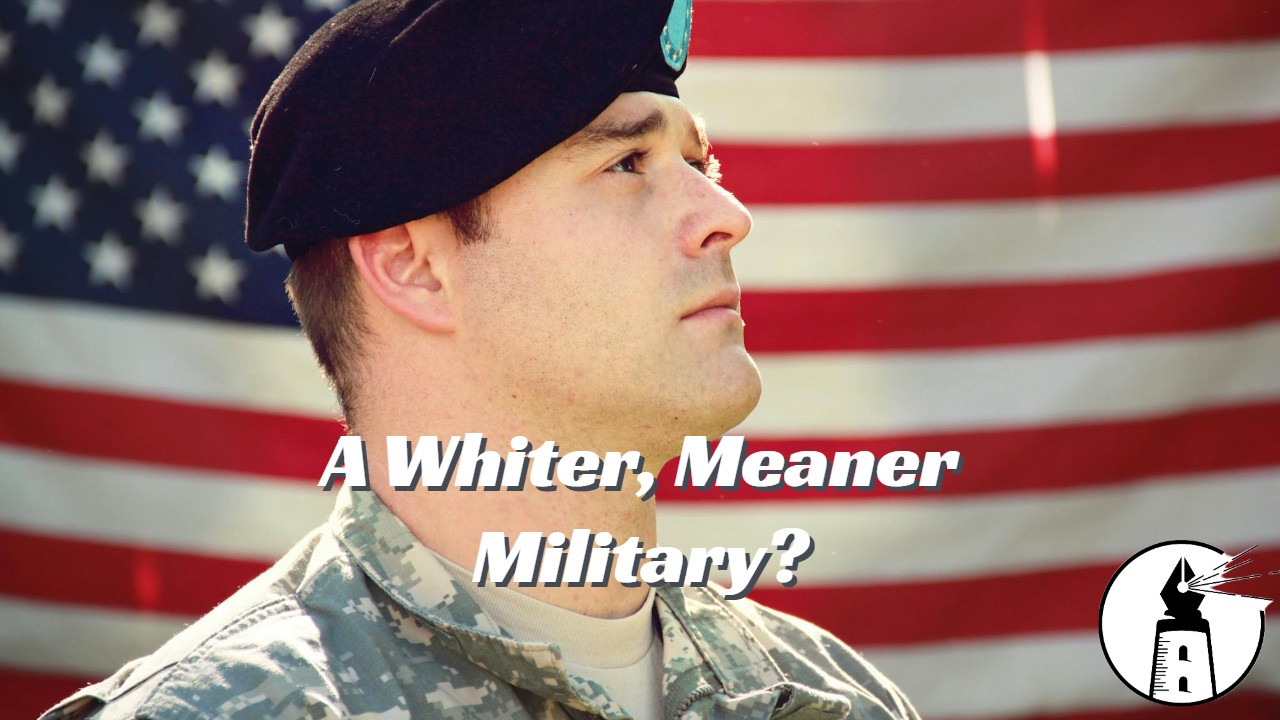Defense Secretary Pete Hegseth’s recent speech at Marine Corps Base Quantico, paired with the policy memo he issued, has raised significant concerns about the direction of the U.S. military. Nearly 800 generals, admirals, and senior enlisted leaders were ordered to attend the gathering, where Hegseth outlined what he calls a return to “warrior ethos.” His remarks, however, went far beyond calls for discipline, and many observers believe they chart a course that excludes women, people of color, LGBTQ personnel, and religious minorities from meaningful service.
One of the clearest signals of exclusion came through Hegseth’s emphasis on grooming and physical appearance. He declared it “completely unacceptable” to see “fat troops” or “fat generals” and reinforced that standard by eliminating permanent shaving profiles for medical conditions and most religious exemptions for beards. These changes will disproportionately affect Black service members suffering from pseudofolliculitis barbae, a painful skin condition linked to shaving, and religious minorities such as Sikhs and Muslims who have received beard waivers in recent years. While Hegseth justified the rollback on the grounds of protective mask fit and survivability, the effect is to reverse inclusivity measures that had been in place for over a decade.
Hegseth also went after diversity programs more directly. He dismissed what he called “identity months, DEI offices, and gender delusions,” criticizing promotions he claimed were awarded on the basis of race or gender. These remarks cast doubt on the legitimacy of women and people of color in leadership roles and suggested that under his leadership the military will prize ideological conformity over equal opportunity. His mockery of “dudes in dresses” made transgender service members a particular target, signaling that their presence is incompatible with his vision of the armed forces.
Women’s access to combat roles could also narrow under Hegseth’s new framework. He has expressed support for imposing stricter physical fitness standards, which critics argue may be designed in ways that disproportionately exclude female troops. He also called for restoring basic training to a “scary” and punishing model, explicitly stating that drill instructors should again be allowed to “put their hands on recruits.” Combined with his support for eliminating hazing investigations, these proposals would roll back safeguards put in place to protect vulnerable service members from abuse and mistreatment.
Another area of concern is Hegseth’s approach to combat operations. He criticized rules of engagement that are designed to minimize civilian casualties, calling them “stupid” and too constraining. Instead, he advocated for “overwhelming and punishing violence” without what he described as politically correct restrictions. Yet rules of engagement exist to ensure compliance with international law and the laws of armed conflict. Violating them is not simply a matter of military discretion; it constitutes a war crime. Hegseth’s dismissal of these standards risks normalizing conduct that could put American service members in legal jeopardy and undermine U.S. credibility abroad.
Beyond the content of the speech, the very staging of the event raised alarm. Defense officials questioned the wisdom of ordering hundreds of top generals and admirals from across the globe to convene in one place, noting the obvious security risk of concentrating so much of the military’s command structure at a single, publicly announced gathering. Adversaries such as Russia and China would take notice of such a vulnerability, and officials worried that the showy nature of the event placed national security at risk for the sake of political theater.
All of these measures tie into Hegseth’s broader insistence that the military must embody a “warrior ethos.” He envisions a fighting force stripped of what he sees as distractions, whether diversity initiatives, religious accommodations, or even medical waivers, and reduced to soldiers who conform physically, ideologically, and culturally to his definition of a warfighter. Those who do not fit the mold, whether due to gender identity, race, medical condition, religion, or different conceptions of service, are implicitly told that they no longer belong.
In presenting this vision, Hegseth has made clear that he wants a force of uniform warriors who “kill people and break things for a living,” while dismissing those who seek to broaden the definition of military strength. Critics argue that this push undermines decades of progress toward inclusion and erodes the principle that the armed forces should reflect the diversity of the nation they defend.
It appears that Hegseth’s goal is an overly violent, all-white, male military. The question that follows is whether his next directive will go further still, dictating that those overly violent white men should only have blonde hair and blue eyes.
—By Greg Collier



